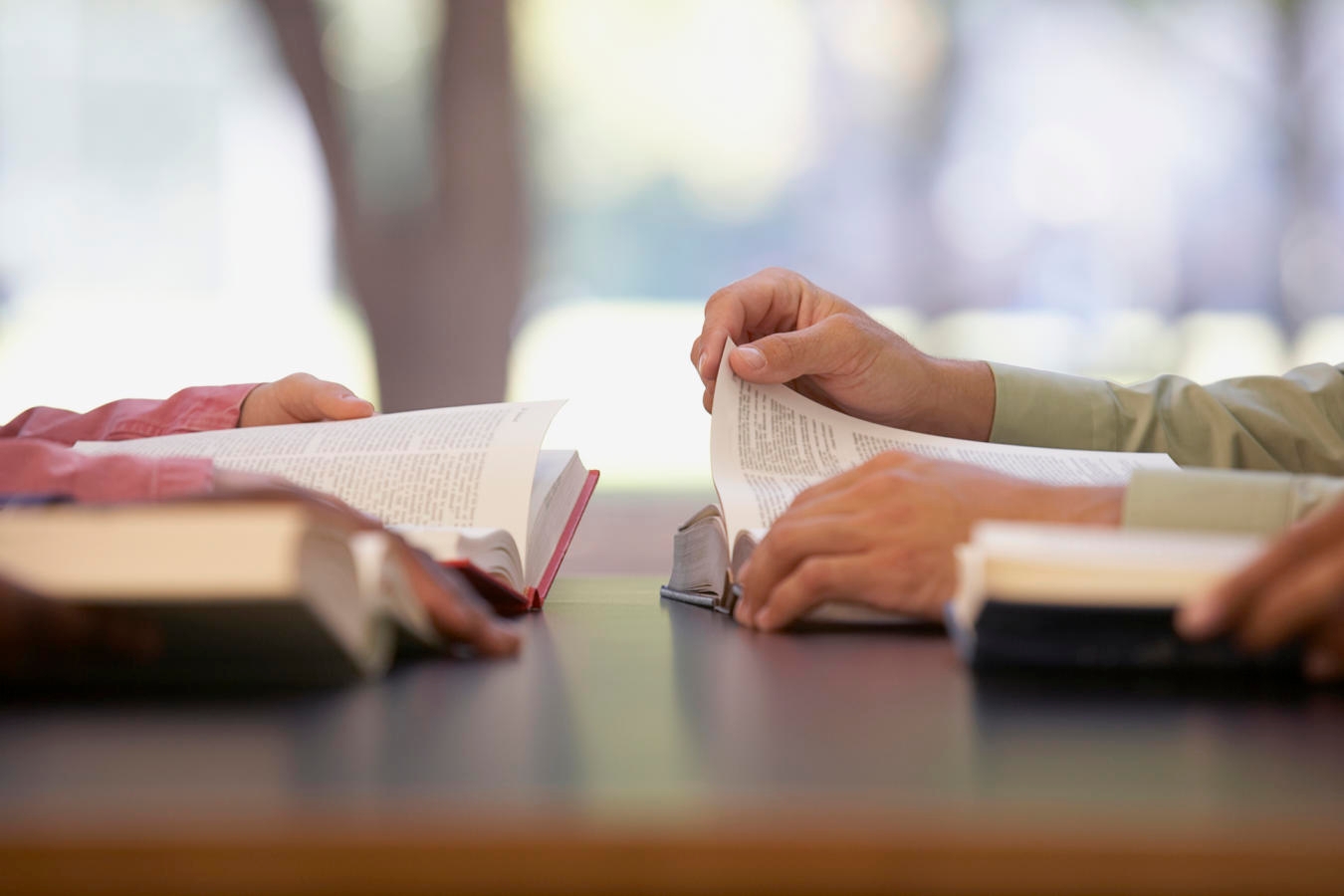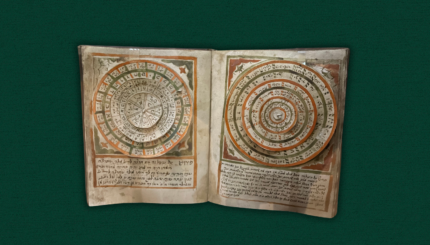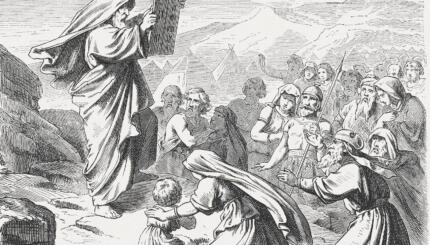If observance were a function of theology, Shavuot would be the most widely observed of Jewish holidays. But precisely the opposite is the case among modern Jews. No major festival suffers from greater neglect. Yet Shavuot, which caps the period of seven weeks since the second Passover seder and simply means “weeks,” is rife with gravity. As the liturgy for the day constantly reminds us, Shavuot commemorates the divine gift of Torah received at Mount Sinai, in consequence of which Judaism spawned a text-centered religious community, possibly the first in human history. Shavuot, then, is about the essential and unique nature of Judaism, a portable religion based on a canon susceptible to unending interpretation. At Sinai, freedom from slavery was recast into fidelity to law and literacy.
But that defining content is not enough to imbue Shavuot with power or popularity. And the reason tells us something about the workings of Judaism. Shavuot is ritually bereft. Unlike Passover or Sukkot, it lacks a set of distinctive practices that would convey experientially its meaning and message. There is nothing comparable to the seder or sukkah for Shavuot, no absorbing home ritual that might unite family and friends in preparation and observance.
The commemoration of revelation is largely confined to the synagogue. The few paragraphs devoted to Shavuot in the Shulchan Aruch [Jewish Code of Law] deal solely with the adjustment of the liturgy (Orah Hayyim, 494). Nothing ever came to replace the bringing of first fruits to the Temple on Shavuot, which expressed the festival’s older agricultural meaning. To shift the impact of Shavuot from nature to history did preserve its character as a day of thanksgiving, but without the ritual choreography that could engage the solitary Jew. Disembodied theology has never been the fare of popular religion.
With your help, My Jewish Learning can provide endless opportunities for learning, connection and discovery.
In short, Shavuot begged for ritual enhancement and this is the need increasingly met by the custom of Tikkun Leil Shavuot, the practice of spending the first night of Shavuot awake in the study of Torah in heightened anticipation of the anniversary of its revelation. Usually done together with at least a minyan [quorum] of participants, the rite, like the seder, is one of re-enactment. With the first crack of dawn, group study turns to communal prayer, culminating in the reading of the Ten Commandments given at Sinai in the unnamed third month of Sivan after the exodus (Exodus 19:1). The combination of extraordinary acts — an all-nighter followed by a sunrise service — created exactly the kind of experiential ritual able to express the particularity of Shavuot. In the last decade both in Israel and America, the ritual in one form or another has caught on among non-Orthodox Jews in ever widening circles. Many synagogues are now lit throughout the night and have multiple services in the morning for early birds and regulars.
The ritual itself is post-talmudic, originating most likely in Kabbalistic [mystical] circles in medieval Spain. The Zohar, which seems to know of the practice, attributes it to early pietists who perhaps sought to distinguish themselves from their ancient ancestors. According to one midrash [commentary], the latter slept nonchalantly through the night preceding the event and had to be roused by lightning and thunder. Forcing ourselves to go sleepless the night before the commemoration of that momentous event thus constitutes an act of rectification (hence Tikkun). Another Zoharic explanation suggests the image of marriage. At Sinai, the Torah as bride and Israel as groom were joined in eternal union. To recall the feverish preparation of the night before the wedding, pietists reenacted the vigil and labor by studying through the night (Magen Avraham, O.H. 494; J.D. Eisenstein, Otzar Dinim u-Minhagim, p. 393).
In time, the ritual gave rise to an extensive collection of texts, which stressed completeness rather than appropriateness. During the course of the night, the group was to recite (rather than study) a few verses from every portion in the Torah and every book of the Bible, including all of Ruth, a few passages from every tractate of the Mishnah, and the passage from the Zohar describing revelation as union. The final text of the Tikkun lists the 613 commandments of the Torah as compiled by Maimonides. What is unfurled in this sprawling canvas teeming with texts is the implicit affirmation that each and every aspect of Judaism is but a branch of the original tree of life planted by God at Sinai. The freedom to interpret the infinite meaning of God’s words is the sap that has sustained and yielded this luxuriant growth.
Indeed, the Torah became the bedrock of Judaism not so much by assertion as by ritual. Liturgy reinforced the claim to canonical status. The progressive chanting (not reading) of Torah from beginning to end every Shabbat in the synagogue, whether annually as in Babylonia or triennially as in Palestine, transformed the Jews into a people imprinted by a book. Its narrative functioned as the unifying metahistory of the nation and the building blocks of public discourse, even as its legislation garnered widespread acceptance and adherence. The synagogue developed into the national theater in which Scripture and liturgy converged to reenact weekly the awesome transmission of Torah at Sinai. Every aspect of the ritual was meant to convey the numinous quality of the original drama.
In the Ashkenazic rite [which is practiced by Jews with Eastern European roots], after the Torah has been set down to read, but before the first aliyah, the gabbai recites four verses from Scripture (Psalm 19:8-9, 29:1, 2 Samuel 22:31) that enunciate the conviction that our Torah is just, pure, and perfect, and its divine author without blemish. As the gabbai finishes, the congregation affirms in unison with another verse that “Those of you who hold fast to the Lord your God are still alive this day” (Deuteronomy 4:4). This prologue amounts to a creedal declaration explaining the ritual. Nothing less than the embodiment of God’s will, the Torah is the Jewish key to salvation.
The constant reading of Torah in the synagogue made of every Shabbat Shavuot. It is inconceivable to me that the Torah would ever have become the dominant and pervasive text of Jewish life without it. The diffusion of theology requires ritual. Modern Jews are at risk not because they have lost their faith, but because they have lost their appreciation for ritual.
gabbai
Pronounced: GAH-bye, Origin: Aramaic, literally "tax collector," but today means someone who assists with the Torah reading in synagogue.The gabbai usually determines who will be called up to the Torah for an aliyah and also assists with other aspects of coordinating worship.
Pesach
Pronounced: PAY-sakh, also PEH-sakh. Origin: Hebrew, the holiday of Passover.
seder
Pronounced: SAY-der, Origin: Hebrew, literally "order"; usually used to describe the ceremonial meal and telling of the Passover story on the first two nights of Passover. (In Israel, Jews have a seder only on the first night of Passover.)
Shabbat
Pronounced: shuh-BAHT or shah-BAHT, Origin: Hebrew, the Sabbath, from sundown Friday to sundown Saturday.
Shavuot
Pronounced: shah-voo-OTE (oo as in boot), also shah-VOO-us, Origin: Hebrew, the holiday celebrating the giving of the Torah at Mount Sinai, falls in the Hebrew month Sivan, which usually coincides with May or June.
Sivan
Pronounced: see-VAHN, Origin: Hebrew, Jewish month, usually coinciding with May-June.
Torah
Pronunced: TORE-uh, Origin: Hebrew, the Five Books of Moses.
Zohar
Pronounced: ZOE-har, Origin: Aramaic, a Torah commentary and foundational text of Jewish mysticism.




